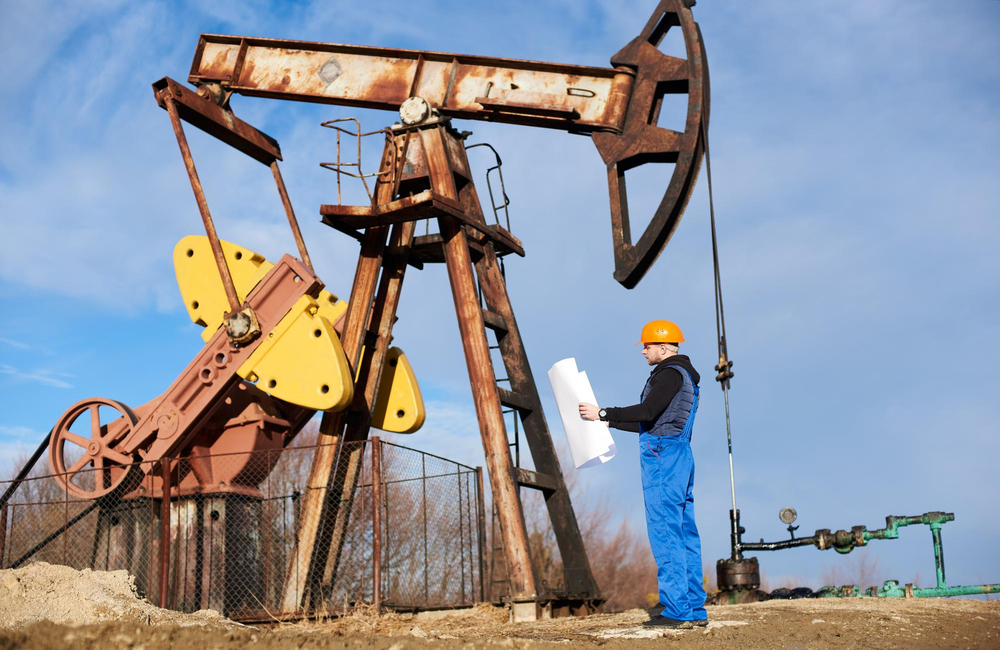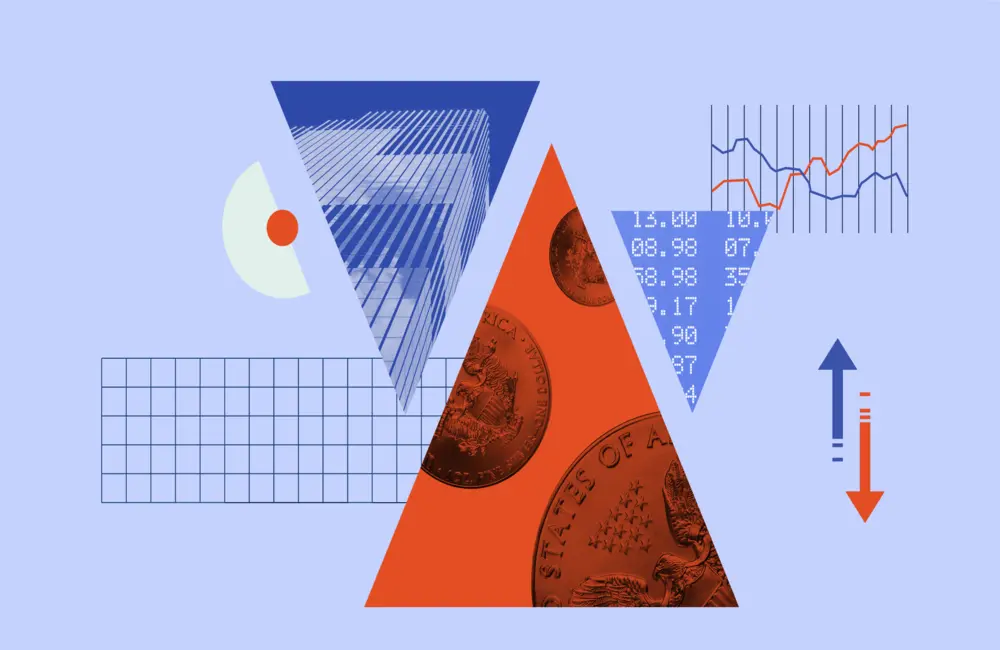ASX futures fell 64 points or 0.98% to 6477 at 8.00am on Wednesday, signalling a lower start.
US markets closed mixed. The S&P 500 added 0.2 percent on Tuesday to better kick off the trading week, following the closure of the U.S. stock and bond markets during the Independence Day holiday. The blue-chip Dow Jones Industrial Average also fell 0.4%. The tech-heavy Nasdaq Composite Index reversed at the loss and added 1.7%.
Equity prices fell for much of Tuesday morning and then rallied back in the afternoon’s trading. The S&P and the Dow Jones Industrial Average dipped as much as 2.2 percent and 2.4 percent.
Brent, the international oil benchmark, fell 9.5% to US$102.77 a barrel. That’s down from over US$120 a barrel a month ago and the biggest single-day drop since March. Demand for fuel generally drops along with a slowdown in economic growth as consumers travel and buy less.
Copper — regarded by many as an economic bellwether — dropped to the lowest price it has traded in 19 months.
“Oil prices are beginning to price in a much higher risk of recession,” said Matt Miskin, co-chief investment strategist at John Hancock Investment Management.
The S&P/ASX 200 ended 0.25% firmer at 6629.3 in local trade after the Reserve Bank raised rates and stood by its intent to cut inflation.
The Reserve Bank issued its second consecutive half-percentage point interest-rate hike, something economists broadly expected. The bank said additional measures to curb prices were probable.
The benchmark index was 1.4% higher this week, driven by advances in gold, energy, and tech stocks.
Regis Resources rallied 11% to lead the sector higher after 4Q production came in above target.
Shares in Santos, Beach, and Woodside climbed between 0.4% and 3.8% as the energy sector gained 2.2% with the help of rising oil prices.
Brainchip and Life360 both climbed 11% as battered tech stocks bounced back.
In commodity markets, Iron ore gained 4% to US$114.30 while spot gold dropped 2.3% to US$1766.07.
Local bond markets were little moved after the Reserve Bank’s widely-expected 0.5 percent rate hike. The yield on the Australian 2 Year government bond was up a basis point at 2.43%, while that on the 10 Year was down a basis point to 3.54%. Over in the US, the yield of 2 Year US Treasury notes dipped to 2.82%, and the yield of the 10 Year US Treasury notes lost to 2.81%.
The Australian dollar fell to 67.94 US cents from 68.63 at the previous close. The Wall Street Journal Dollar Index, which measures the US dollar against 16 other currencies, soared to 98.69.
Asia
China stocks closed lower, as the market continued a rangebound consolidation trend in recent trading sessions as investor sentiment has soured on global equities. The main Shanghai Composite Index dipped 1.40 points to finish at 3404.03, while the Shenzhen Composite Index lost 0.5% to 2232.98. The ChiNext Price Index, which is heavy on tech stocks, shed 0.3% to finish at 2825.13. Consumer goods and services companies led the retreat, as the sectors retreated from recent gains that had been fueled by the measures, including vouchers and tax cuts, from Beijing to revive the economy.
Hong Kong shares also closed slightly lower, with the benchmark Hang Seng Index down 0.1% at 21830.35 as Hong Kong shares closed marginally higher as the benchmark Hang Seng Index up was 0.1% at 21853.07. The sentiment was backed by gains in US equities futures, primarily on the hope the US would get rid of tariffs on China, in a note said SPI Asset Management managing partner Stephen Innes. However, recession fears remain which could temper investor buying of riskier assets, Innes added. Gains were broad-based with Wuxi Biologics leading the pack, up 6.5%, followed by Alibaba Health Information Technology 0490.HK, which gained 4.7%, and Anta Sports Products 02020.HK, which climbed 2.6%.
Japanese stocks closed up, backed by gains in tech shares after their recent drops on concerns about rising borrowing costs and the economic outlook. M3 rose 3.9% and MonotaRO jumped 3.6%. The Nikkei Stock Average climbed 1.0% to finish at 26423.47. Investors were also looking for policy-related news ahead of Sunday’s Japan upper-house election.
Europe
European markets were sluggish as economic and inflation fears rattled investors on either side of the Atlantic.
The pan-European Stoxx Europe 600 was down more than 2% and the French CAC 40 and German DAX were down more than 2% as US traders returned from the Independence Day holiday. Brent crude retreated 9% to $102.94 a barrel, and precious and base-metal prices remained deep in negative territory.
“This return of selling has sent indices across the board back into the red, as growth and inflation fears return with perfect timing,” IG analyst Chris Beauchamp says. “Oil and mining stocks have plunged into the red, a trend mirrored on Wall Street as well.”
London’s FTSE 100 sank Tuesday as oil and mining shares tumbled. That sent the commodity-heavy UK index 2.9% lower, its worst session since 16 June. Shell plunged 8.5% on the energy side and peer BP slumped 7.0%. The FTSE 100's biggest loser was Harbour Energy, the smaller, UK-focused oil-and-gas producer. Its shares dropped 9.6%.
Miners fared even worse, with Anglo American shares down 8.3% and Glencore down 8.0%, and Rio Tinto down 4.0%. “Once high-flying UK energy and mining stocks, from Shell and BP to Glencore and Anglo American, are in the cross-hairs of recession fears today, as fears of future demand for commodities collapse, despite the reopening of China,” said Ben Laidler of eToro via Dow Jones Newswires.
North America
Two of the three major US stock indexes finished higher after a late-afternoon rally, while oil prices dropped as investors worried that slowing economic growth could reduce energy demand.
The S&P 500 added 0.2 percent on Tuesday to open the trading week after the US stock and bond markets were closed for the Independence Day holiday. The Dow Jones Industrial Average fell 0.4%. The tech-heavy Nasdaq Composite Index erased earlier losses to rise 1.7%.
Shares plunged for much of Tuesday morning before climbing back in afternoon trading. The S&P was down as much as 2.2 percent and the Dow Jones Industrial Average was down as much as 2.4 percent.
Brent crude, the international oil standard, fell 9.5 percent, or $10.73, to $102.77 a barrel. That’s a decline from over $120 a barrel a month ago. West Texas Intermediate, the US standard, fell more than 8 percent, or $8.93, to $99.50, settling below $100 for the first time since May. Both commodities logged their biggest one-day falls since March. Consumer demand for fuel usually drops as economic growth slows, as people travel and buy less.
“Oil prices are beginning to discount a much larger recession risk,” said Matt Miskin, co-chief investment strategist at John Hancock Investment Management.
Oil prices climbed into late spring this year as aftershocks from Russia’s invasion of Ukraine reverberated through global supply. Prices have been less volatile in recent months, but are still above roughly $80 where they started the year.
US stocks have a good track record of performing well in July, but history only goes so far this year as investors say they are preparing for more pain ahead. Traders have their eyes trained on stubborn inflation that has compelled central banks across the globe to aggressively tighten monetary policy. Recent economic data has highlighted drops in a wide range of metrics, including factory output and retail spending, fueling fears that the US economy could fall into a recession.
Gold prices dropped 1.9%, while the WSJ Dollar Index, which gauges the greenback against a basket of 16 currencies, rose about 1%.
The euro, by contrast, fell around 1.5 percent, sinking to a near 20-year low, driven by fears that the eurozone is headed toward renewing an energy shock that may push the bloc into recession. The euro traded at $1.0266 recently, close to the point of parity.
Had it not been for early reports that President Biden was expected to roll back some tariffs on Chinese imports, stocks might have fallen even further: The news initially sent stocks higher in premarket trading with hopes that those changes could contain inflation. But as the session wore on, the selling pressure intensified.
“The market is starving for good news,” said Florian Ielpo, head of macro for Lombard Odier Investment Managers. Even a potential rollback of tariffs, he said, isn’t the answer to how it will deal with growing fears of recession and inflation.
Elsewhere in markets, volatility was everywhere. European gas prices climbed to their highest levels since March as oil workers in Norway went on strike, cutting output from Europe’s second-largest gas supplier after Russia at a moment when energy markets are already tight.
“The energy shock being experienced by the US is far less than in Europe,” said Marco Pirondini, the head of U.S. equities at Amundi US, an asset-management firm.
In the bond market, meanwhile, the yield on the benchmark 10-year US Treasury note dropped to 2.808 percent, from 2.901 percent Friday.
The June jobs report set to be released Friday will give investors insight into where the US economy is headed. The job market so far this year hasn’t shown much sign of faltering — providing one piece of good news for the economy — even as other data over the past several weeks have pointed to an economic slowdown.
As major companies kick off second-quarter earnings reports this month, investors may be disappointed.
“The initial shoe that dropped was with the Fed trying to get control over inflation,” said Cliff Corso, president and chief investment officer at Advisors Asset Management. “The second shoe and the question mark for the second half is earnings … those have not yet been adjusted down to reflect a slowing GDP forecast.”
Money managers and strategists also will be keeping an eye on developments related to the Biden administration’s plans toward tariffs, and what effect it could have on inflation and the economy. Chinese Vice Premier Liu He held a videoconference call with US Treasury Secretary Janet Yellen on Tuesday that included a discussion of the tariffs, the first discussion between the two policy makers since October 2021.
Economists say Chinese tariffs’ removal is unlikely to have a dramatic effect on inflation. And any rollback might not signal a fundamental shift in the relationship between the United States and China or the countries’ economic outlooks, according to some investors.
Advances in the S&P’s communications services, consumer discretionary and information technology sectors lifted the broad-market index into positive territory for the day. The energy sector suffered the biggest drop of any sector, off roughly 4%.
Ford Motor Co. stock declined 1.1%, or 12 cents, to $11.20 after sales at the company dropped 27% in June from the same month last year. Tesla stock climbed 2.5%, or $17.41, to $699.20. Tesla said Saturday that its vehicle deliveries declined quarter over quarter for the first time in more than two years after the company was forced to temporarily shutter its biggest factory, in Shanghai, due to local Covid-19 restrictions.























